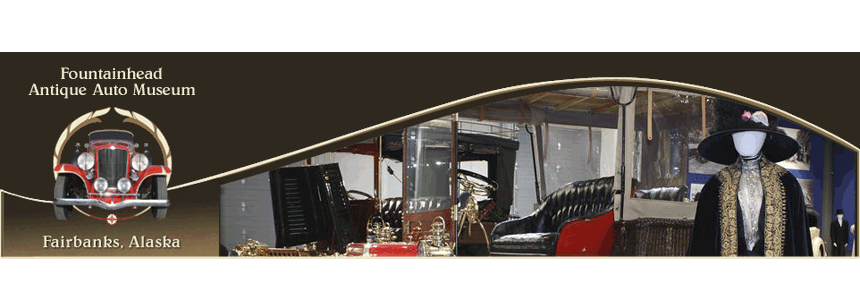by Nancy DeWitt
©
Fountainhead Antique Auto Museum
 |
| 1899 Hertel, #28 |
One of the most interesting of our Veteran Era cars is our 1899 Hertel runabout (also incorrectly referred to as an Oakman or Oakman-Hertel), which was profiled in earlier blog posts
here and
here. It basically consists of a body and engine mounted between two bicycle frames, although it has some rather clever engineering.
 |
| 1898 Hertel (#37) sold by Christie's in 2002 |
The sign that came with our Hertel said it was the only remaining example, although a simple Google search revealed a second one that had been sold through a Christie's auction in London in 2002. That one now resides at the
Sparreholm Manor in Sweden. A press release about its sale said it was one of three known to exist, so where was the third one? In late 2009, I received an email from the husband of Max Hertel's great granddaughter saying that they had seen a Hertel at a museum in Australia and would send photos. I assumed it was at the National Motor Museum in South Australia, but my correspondent never followed up with more information, and my internet searches proved fruitless.
 |
| John Pender's 1897 Hertel at the Melbourne Museum |
This past October I decided to revisit my friend Google, and lo and behold, I got some hits on the third Hertel. It is indeed in Australia, at the
Melbourne Museum. What a fascinating story it has! It appears to be the oldest of the surviving Hertels. The majority of sources I found say the car was built to order in 1897 for John Pender, a Melbourne businessman who made horseshoes and horseshoe nails. Pender was originally from Canada, and during an 1896 visit to North America he reportedly became so intrigued with Max Hertel's prototype that he ordered one for himself. His runabout is believed to be the first automobile imported to Australia, and the first car in Melbourne.
In an interesting twist to the story, one resource I came across claim that John Pender actually designed this car, and then collaborated with Max Hertel to build it in Chicago. Could that explain the differences between his car and ours? A Wikipedia entry states that Pender only built the transmission in his "Pender-Hertel":
 John Pender had visited Chicago in 1896, and witnessed the Chicago Times-Herald automobile race where he was impressed by a car built by Max Hertel. After returning to Australia, Pender designed a new type of transmission and sent the details to Hertel. Hertel fitted one of his cars with Pender's transmission and shipped it to Australia.
John Pender had visited Chicago in 1896, and witnessed the Chicago Times-Herald automobile race where he was impressed by a car built by Max Hertel. After returning to Australia, Pender designed a new type of transmission and sent the details to Hertel. Hertel fitted one of his cars with Pender's transmission and shipped it to Australia.
During a parade in December of 1897, Pender's Hertel broke down and caught fire, suffering severe damage. It's unclear if he drove it again before he donated it to the Melbourne Museum in 1914. We would love to examine this Hertel and do a thorough comparison to ours. If you are going to Melbourne, please let us know.
The most interesting part of this story to me is that only about a dozen Hertels are believed to have been built, and yet three of these fragile cars still exist. That is a remarkable survivor rate!
Coming to Fairbanks to see the Fountainhead Antique Auto Museum and other area attractions? Support the museum by staying at one of the Fountainhead Hotels. All guests receive half-price admission to the museum!



John Pender had visited Chicago in 1896, and witnessed the Chicago Times-Herald automobile race where he was impressed by a car built by Max Hertel. After returning to Australia, Pender designed a new type of transmission and sent the details to Hertel. Hertel fitted one of his cars with Pender's transmission and shipped it to Australia.

No comments:
Post a Comment
Blogging about the Fountainhead Antique Auto Museum's latest news, adventures and research